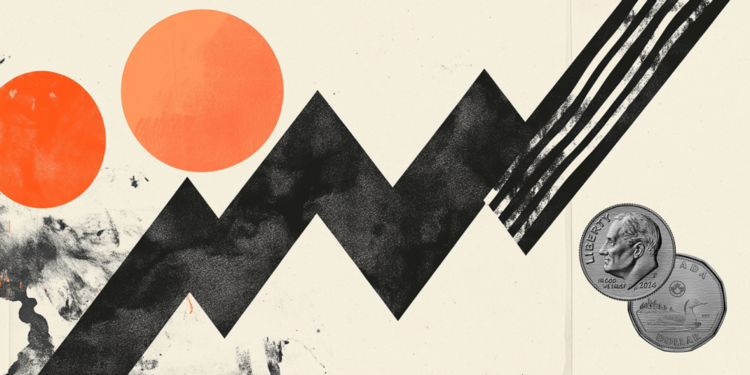Senator and former minister Damares Alves (Republicanos-DF) recently declared, through her social networks, that she had facial paralysis due to herpes zoster disease, caused by the same chickenpox virus.
In the United States, Senator Dianne Feinstein, an 89-year-old California Democrat, recently announced that she was released from the hospital and is recovering at home from the condition, a painful viral inflammation of the nerves in the skin that causes a rash that lasts for two to four weeks. . Feinstein was diagnosed in February and hospitalized in San Francisco last week.
The disease, which is also called shingles, is caused by the varicella-zoster virus – which is the same responsible for chickenpox. The microorganism is also responsible for a rare condition called Ramsay Hunt syndrome, which caused pop star Justin Bieber’s face to become partially paralyzed in June 2022.
“As you can see, this eye is not blinking. I can’t smile on this side of my face. This nostril doesn’t move,” Bieber said at the time in response to fans wondering why he had canceled performances.
What are the symptoms of herpes zoster?
Sore skin is one of the first signs of shingles, and for some people, the pain is severe. It can create a burning sensation, or the skin can tingle or feel tender to the touch, according to the Mayo Clinic. Signs can occur elsewhere on the body, such as the face and scalp, but the most common presentation is on the trunk on one side of the body.
A red rash will begin to develop at the site of pain within a few days. The sore usually starts out as a small, painful spot, which then spreads as “a band of blisters that wraps around the left or right side of the torso,” reports the Mayo Clinic.
In rare cases, the rash can spread and look similar to chickenpox symptoms, usually in people with weakened immune systems, according to the US Centers for Disease Control and Prevention (CDC).
In addition to pain, some people may experience chills, fatigue, fever, headache, stomach pain, and sensitivity to light. See a doctor if you are over 50, have a weakened immune system, the rash is widespread and painful, or if the pain and skin damage occurs near one eye.
“If left untreated, this infection can lead to permanent eye damage,” according to the Mayo Clinic.
Is the disease contagious?
The varicella-zoster virus is highly contagious when in the blister phase, spreading by direct contact with blister fluid and by viral particles in the air.
However, you cannot catch shingles from someone who has shingles. If you haven’t been vaccinated against chickenpox or haven’t had it previously and you’re infected by that person, you’ll develop chickenpox, which puts you at risk for shingles in the future, the CDC said.
If you have shingles, you can prevent the virus from spreading by covering the rash and not touching or scratching the raised vesicles that form the sore, the CDC said. Also, wash your hands frequently.
“People with shingles cannot spread the virus before their blisters appear or after the scabs appear,” the CDC said.
If the rash is covered, the risk of transmission “is low,” the CDC said. “People with chicken pox are more likely to spread (the virus) than people with shingles.”
What is the treatment for shingles?
If you think you have shingles, seek medical attention as soon as possible, the CDC recommended. If caught early, there are antiviral medications, including acyclovir, valacyclovir, and famciclovir, that can reduce the duration and severity of the illness.
“These drugs are most effective if you start taking them as soon as possible after the rash appears,” the CDC said.
Doctors may also recommend over-the-counter or prescription pain relievers for burning and pain, while calamine lotion, wet compresses, and oatmeal baths can relieve itching.
For older adults, the population most likely to develop shingles, the best treatment is prevention. The Food and Drug Administration, a US agency similar to ANVISA, approved a two-dose vaccine called Shingrix in 2017 for people age 50 and older.
“Shingrix is also recommended for adults age 19 and older who have weakened immune systems due to illness or therapy,” the CDC said.
Shingrix, which is not based on a live virus, is more than 90% effective at stimulating the immune system to recognize and be ready to fight the virus, according to its manufacturer, GlaxoSmithKline.
Anyone who has had a severe allergic reaction to a dose of Shingrix or is allergic to any of the vaccine’s components should avoid it, the CDC said.
“People who currently have shingles and women who are pregnant or breastfeeding should wait to receive Shingrix,” the CDC said.
Another vaccine called Zostavax, which the FDA approved for people over age 50 in 2006, is 51% effective at preventing shingles, according to the CDC. Zostavax is based on a live virus, the same approach used for the recommended childhood chickenpox vaccine. Not sold in the United States since November 2020.
What is the connection with chicken pox?
If you’ve never had chickenpox, you can’t get shingles. However, once you’ve had chickenpox, the virus lies dormant in the spinal sensory neurons, possibly erupting years later as shingles.
Two doses of chickenpox vaccine for children, teens and adults, introduced in 1995, are 100% effective in preventing a severe case of chickenpox, according to the CDC. Immunity lasts 10 to 20 years, the CDC noted.
In the small number of people who still get chickenpox after vaccination, the illness is usually milder, with few or no blisters.
The CDC recommends that the vaccine be given to children in two doses, the first between 12 and 15 months and the second between 4 and 6 years. Anyone age 13 and older who has no evidence of immunity can receive two doses four to eight weeks apart, the CDC said.
Some people should not get the vaccine, including pregnant women, people with certain blood disorders or on long-term immunosuppressive therapy, with moderate or severe illness, among others.
Complications of Herpes Zoster
About 1 in 10 people will develop a painful and possibly debilitating condition called postherpetic neuralgia, or long-term nerve pain. All other skin moles may disappear, but the area remains extremely painful to the touch. Less often, itching or numbness may occur.
The condition rarely affects people younger than 40, the CDC said. Older adults are more likely to have more severe pain that lasts longer than a younger person with shingles. For some, nerve pain can be devastating.
“Five years later, I’m still taking prescription pain meds,” said a 63-year-old harpist who shared his story on the CDC’s website. “My rashes quickly developed into open, oozing sores that in just a few days required me to be hospitalized.”
“I couldn’t eat, sleep or perform even the smallest tasks. It was totally debilitating. The pain still limits my activity levels to this day,” said the musician, who is unable to continue playing the harp due to the pain.
(Text translated and adapted)
Source: CNN Brasil
I am an experienced journalist and writer with a career in the news industry. My focus is on covering Top News stories for World Stock Market, where I provide comprehensive analysis and commentary on markets around the world. I have expertise in writing both long-form articles and shorter pieces that deliver timely, relevant updates to readers.







